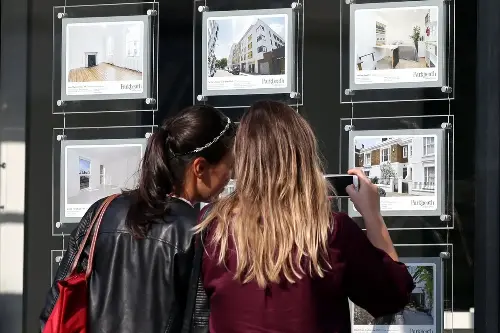
London first-time buyers will pay an extra £6,250 in stamp duty tax on a £425,000 home from spring 2025 if Chancellor Rachel Reeves does not freeze thresholds at their current levels.
Tomorrow’s Autumn Budget, Labour’s first for 14 years, is expected to contain a raft of tax rises and reforms that will directly impact the housing market.
Labour has been urged to consider freezing stamp duty tax at current rates but it is thought that Ms Reeves has decided against this as part of her plan to raise up to £40bn from tax hikes and spending cuts.
Stamp duty cuts introduced in Kwasi Kwarteng’s mini-Budget in September 2022 were intended as a permanent measure at the time but, in the Autumn Budget just two months later, Jeremy Hunt announced that the property tax break would be a long holiday instead.
If Ms Reeves does not announce new measures in her Autumn Budget tomorrow, stamp duty thresholds will revert to the old rates on 1 April 2025.
Current stamp duty thresholds (in place since September 2022)
In 2022, the threshold at which buyers started to pay stamp duty tax was increased from £125,000 to £250,000. This means that for properties priced below £250,000, no stamp duty tax is currently payable, equating to a saving of up to £2,500 for home movers.
For first-time buyers, the threshold was increased from £300,000 to £450,000 – so long as the total property price is below £625,000. This means a tax saving of up to £11,250.
These higher thresholds are due to last until 31 March 2025 as Labour has not committed to an extension.
Price of property |
Stamp duty (until 1 April 2025) |
Up to £125,000 |
Zero |
The portion from £125,001 to £250,000 |
Zero |
The portion from £250,001 to £925,000 |
5% |
The portion from £925,001 to £1.5 million |
10% |
Anything above £1.5 million |
12% |
First-time buyers are exempt up to £425,000 as long as the total property price is below £625,000.
Likely ‘new’ thresholds from the end of March 2025
Price of property |
Stamp duty (from 1 April 2025) |
Up to £125,000 |
Zero |
The portion from £125,001 to £250,000 |
2% |
The portion from £250,001 to £925,000 |
5% |
The portion from £925,001 to £1.5 million |
10% |
Anything above £1.5 million |
12% |
First-time buyers will be exempt from stamp duty up to £300,000 as long as the total property price is no more than £500,000.
Anyone buying additional an additional property to their main residence must pay a three per cent surcharge, while non-UK residents pay a two per cent surcharge.
When do you pay stamp duty?
Stamp Duty Land Tax (SDLT) must be paid when buying property or land over a certain price in England and Northern Ireland. In Scotland buyers pay Land and Buildings Transaction Tax (LBTT), while in Wales buyers pay Land Transaction Tax (LTT).
You have 14 days to pay stamp duty tax from the date of completion. If you miss this deadline, you could face a fine or be charged interest on tax owed.
You pay the tax when you buy:
- A freehold property
- A new or existing leasehold
- A property through a buying scheme such as shared ownership
- A share in a house or when you take out a mortgage loan
What will be the impact of stamp duty changes on Londoners?
Would-be home buyers and movers will feel the effects of stamp duty changes most keenly after March next year when current discounts end and the threshold at which stamp duty becomes payable drops.
Home buyers in the most expensive regions – in particular London and the South East — will be most impacted due to high average property prices and a shortage of first-time buyer homes priced below the upper limit of £500,000.
Rishi Sunak’s stamp duty holiday
During the pandemic, then Chancellor Rishi Sunak introduced a stamp duty holiday to stimulate the property market. Waiving the property purchase tax on the first £500,000 of a transaction gave all home buyers a discount of up to £15,000.
The break lasted for almost a year between July 2020 and June 2021, when the benefit started to taper off. Property transactions boomed but the tax break was also blamed for inflating house prices.
© The Standard Ltd